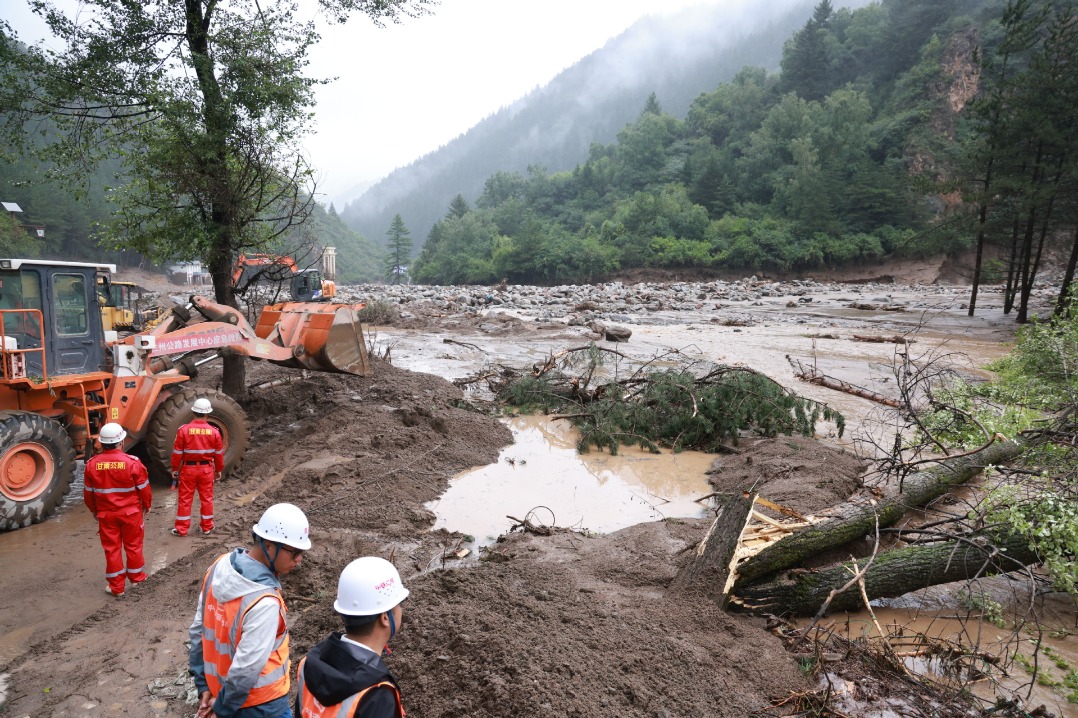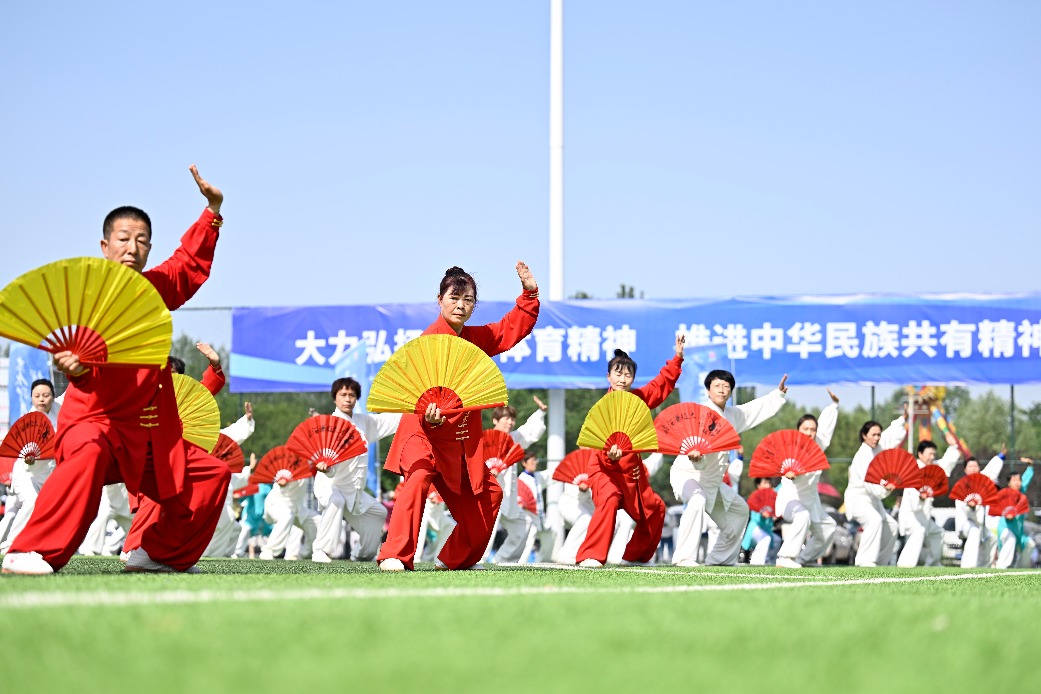Pigment makers push to protect ancient art

Some traditional handicrafts are being lost as region engages more closely with modern world
For most people, the phrase "Tibetan art" calls to mind images of a range of handicrafts, including traditional scroll paintings, known as thangkas. However, few people are familiar with the pigments that artists in the Tibet autonomous region use to paint the thangkas.
The production of mineral pigments is an ancient art in Tibet, but it's heading for extinction at a rapid pace. "The production of mineral pigments is an interesting part of Tibetan traditional culture that was inherited by our ancestors. We want to ensure that it lasts forever," says Penpa, a thangka master and instructor in pigment production in Lhasa, the capital of Tibet.
| Samdrub uses traditional Tibetan mineral pigments on a thangka in his workshop. Palden Nyima / China Daily |
| A thangka artist creates a variety of hues using mineral pigments. Xinhua |
| Ores are broken into pieces before being ground to a fine powder in a water-filled stone groove. Xinhua |
"Our team considers the production of genuine mineral products as a way of repaying the love shown by our former masters," the 43-year-old says. "I consider the work to be a contribution to the continuation of our ancestors' valuable heritage."
While many people speak of innovation or "expanding" a heritage, Penpa simply wants to follow in his ancestors' footsteps without altering the ancient traditions.
"I don't want any breakthroughs to endanger the preservation of what our ancestors left for us. That would be enough," says Penpa, who works for Lhasa Ancient Architectural Arts Co, a 30-year-old outfit that operates one of just three pigment workshops in the region.
Most of the company's work involves the restoration and refurbishment of ancient architecture, and the production of mineral pigments is one of its core businesses.
Although some producers sell pigments that contain a mixture of mineral pigments and modern, synthetic dyes, Penpa's company only produces and sells genuine Tibetan pigments. "Real Tibetan pigments are made from mineral stones and plants. The other pigments in the Tibetan market are produced in other Chinese provinces and in India," he says.
Tibetan mineral pigments are of such high quality that they will retain their color for more than 200 years. In extreme cases, some pigments will remain pristine for as long as a millennium.
The production process for mineral pigments is far more difficult than that used to make other pigments, and as a consequence, they are much more expensive.
A variety of pigment-bearing minerals can be ground into fine powders to produce five basic colors - green, blue, red, yellow and white - which are then divided further into hues.
The pigments are all extracted from ore stones. White stones come from Rinbung county, while the other colors are found in different parts of the region, such as Nyemo county, Qamdo city, and even in the Diqing Tibetan autonomous prefecture in Yunnan province.
Penpa's colleague Samdrub says his team only uses mineral pigments, because colors in non-mineral pigments produced outside Tibet fade quickly.
Ageless beauty
"Tibetan mineral pigments will remain bright and unfaded for more than 200 years, sometimes as long as 1,000 years," Samdrub says.
"The pigments produced at lower altitudes cannot endure the harsh conditions in Tibet, such as the intense ultraviolet light and strong winds," the 50-year-old says.
He says the company has eradicated the sale of counterfeit or low-quality products. "Instead of cheating people, it's important to show them different products at different prices. If people cannot afford to buy artifacts made with mineral pigments, there are always alternatives, such as thangkas produced using pigments produced in other places in China and in India," Samdrub says.
Only four companies in China produce genuine Tibetan mineral pigments - unsurprisingly three of them are situated in Tibet, while the other is in Beijing.
Traditionally, thangka painters made their own pigments, but they were for personal use and not for sale. The arrival of the market economy resulted in changes, though, and Lhasa Ancient Architectural Arts trademarked its pigments 15 years ago.
The company employs eight thangka masters, more than 30 apprentices and five pigment producers, who make 18 different pigments, all the colors a painter needs.
Moldmakers, coppersmiths, welders, carpenters and stonemasons are also employed, so whenever renovation work is scheduled for ancient buildings and monasteries, the company can provide a full range of services. That edge means business is usually good.
The company's pigments are sold across the Qinghai-Tibet Plateau, in other parts of China, and even overseas in places such as the United Kingdom and France.
"An old Tibetan proverb says: 'Some work requires a light, sick person's touch, while other jobs require great strength, like that of a strong, young man', " Penpa says.
"The process of producing pigments requires a great deal of patience, time and different strengths during different procedures, so the work is carried out exclusively by women," he says.
palden_nyima@chinadaily.com.cn
(China Daily Africa Weekly 07/17/2015 page28)
Today's Top News
- Xi says China will continue to promote peace talks in Ukraine crisis
- Leaders of over 20 countries to attend SCO Tianjin Summit
- Xi urges all-out rescue efforts following mountain torrents in Gansu
- A Quixotic quest to reindustrialize US
- Grassroots sports events promoting nation's fitness goals
- Major test brings lunar mission closer to reality

































